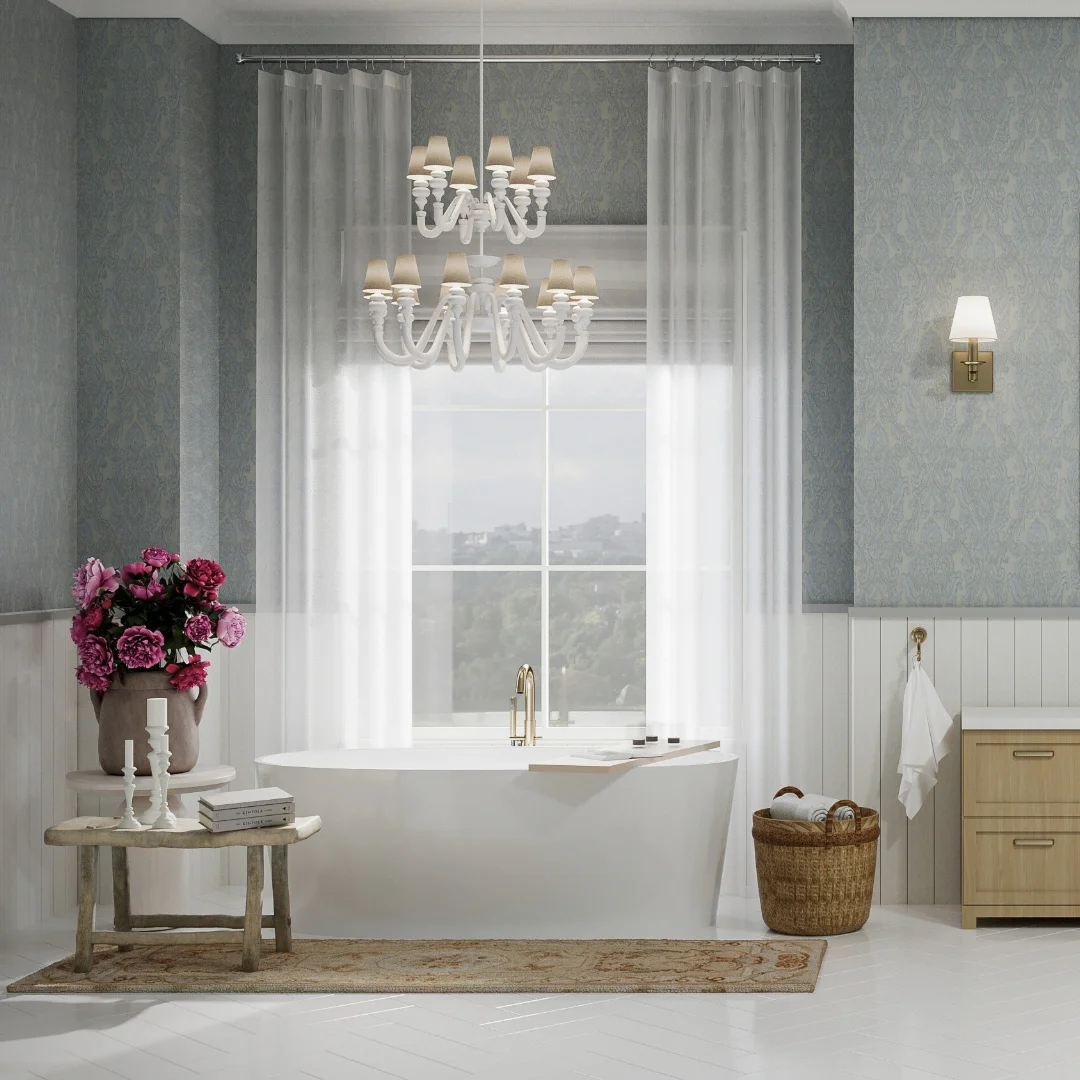In this post we delve into the world of architecture and classic interior design ,
Examining how a combination of rich materials,
Elegant furniture and sophisticated color palettes can create a timeless and luxurious space.
We provide practical tips and insights on how to achieve this classic aesthetic in your home,
With a special focus on the design of a luxurious shower room in a classic style that guarantees calmness and pampering.
1. The essence of classical architecture and interior design: what makes it timeless?
Classical architecture and interior design have stood the test of time for a reason – their timeless appeal and enduring elegance. The essence of classic design lies in its ability to blend sophistication with simplicity,
while creating a space that radiates charm and grace. Classical architecture often includes symmetrical facades,
Magnificent columns and complex developments that add a sense of grandeur to any space. In terms of interior design,
The classic style emphasizes balance, proportion and harmony, resulting in rooms that feel cohesive and inviting. The use of traditional architectural elements such as crown molding,
Ceiling medallions and glass cladding further enhance the classic aesthetic, adding depth and character to the space. Classic design is characterized by a sense of timelessness, which draws inspiration from historical styles such as Greek, Roman and French architecture. By incorporating these design principles in your home, you can create a space that transcends trends and fashions,
which offers a sense of permanence and sophistication.
For a consultation call at no cost and without obligation call now or leave details in the box
2. ‘Luxury must be comfortable, otherwise it’s not luxury’.
The role of rich materials in classic design
– Coco Chanel:
Luxury must be comfortable, otherwise it is not luxury.” This quote from Coco Chanel perfectly encapsulates the essence of classic design – a seamless combination of opulence and comfort. In classic architecture and interior design,
The use of rich materials plays a central role and enhances the overall aesthetics of the space.
From luxurious fabrics like silk and velvet to shiny metals like brass and gold,
Rich materials add a sense of luxury and sophistication to any room.
Wood, especially dark hardwoods such as mahogany and oak, is another element of classic design,
which adds warmth and richness to the interior. When choosing furniture for a classic space, choose items designed from quality materials such as solid wood, leather and velvet upholstery. These materials not only improve the visual appeal of the room,
but also contribute to his comfort and longevity. Rich materials not only enhance the aesthetics of the space,
but also create a sense of luxury and indulgence that is synonymous with classic design. By incorporating these luxurious materials in your home, you can create a space that exudes timeless elegance and sophistication,
which invites you to relax in style.
3. Can your furniture choices elevate your space to a classic standard?
When it comes to achieving classic interior design,
Furniture plays a crucial role in setting the tone and defining the overall aesthetics of the space. Classic furniture is characterized by timeless designs, excellent craftsmanship and attention to detail. Choose pieces with elegant silhouettes, intricate carvings and luxurious finishes to elevate your space to a classic standard. Combine reliable pieces of furniture such as a checkered Chesterfield sofa, a royal four-poster bed or a luxurious dining table,
To add a touch of sophistication and luxury to your interior. Classic pieces of furniture often include rich materials such as solid wood, leather and ornate upholstery, and add depth and texture to the room. Consider investing in quality furniture that will stand the test of time, both in terms of style and durability. To enhance the classic atmosphere of the space,
Pay attention to the scale and proportion of your furniture,
Make sure they complement the architectural elements of the room. By carefully curating the furniture selection and selecting items that reflect the timeless elegance of classic design,
You can turn your space into a luxurious haven that exudes sophistication and charm.
For a consultation call at no cost and without obligation call now or leave details in the box
4. Planning a shower room in a classic style: how can you turn it into a space of luxury and relaxation?
Designing a shower room in a classic style involves creating a space that exudes luxury and calm.
Start by choosing quality materials such as marble, granite or travertine for walls and floors,
To add a touch of elegance and sophistication. Combine classic elements such as a free-standing bath,
A rain shower head and decorative pattern to enhance the space’s timeless appeal. Choose a neutral color palette with soft tones such as creamy white, soft gray or muted blue to create a relaxing and peaceful atmosphere. Consider adding a chandelier or sconces to the wall for ambient lighting that adds a touch of glow and warmth to the room. Install a heated towel rail and luxurious bath rugs for added comfort and luxury. Create a spa-like experience by adding scented candles,
Aromatic oils and soft towels to pamper the senses. By carefully planning and designing your shower room with classic elements and luxurious touches, you can turn it into a room where you can relax and rejuvenate in style.
Classic architecture and interior design is not just about creating a visually appealing space. It is about creating an environment that radiates elegance, sophistication and timelessness. By combining rich materials,
Choosing elegant furniture and choosing sophisticated color palettes,
You can turn your home into a classic masterpiece. remember,
The essence of classic design lies in its focus on details, quality and beauty. so,
Don’t be afraid to invest in quality items that will stand the test of time and make your home truly stunning.
For advice on architecture and classic interior design, contact us





